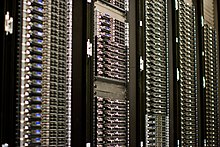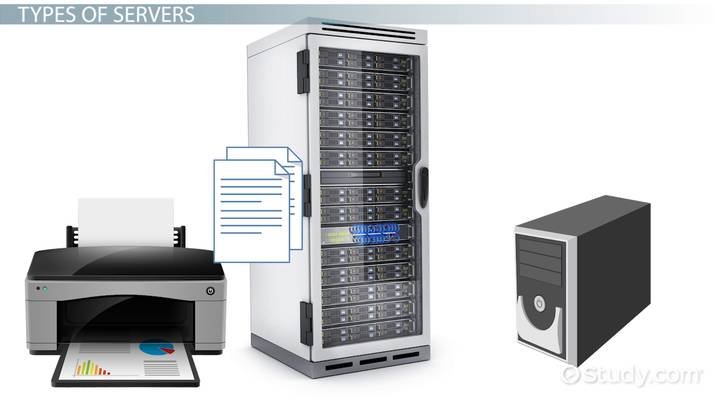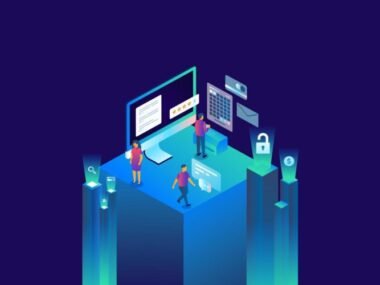Definition and Purpose of Servers: Servers are powerful computers designed to provide data, resources, or services to other computers, known as clients, over a network.
Their purpose is to manage network resources efficiently and handle requests from multiple clients simultaneously. Servers are vital to today’s digital infrastructure. They are the backbone of both internet and intranet communication.
They range from web servers for websites to file servers for data. Each type is optimized for its task. It ensures that digital operations run smoothly and reliably.
With the rise of cloud computing, servers are now virtual, not physical. They provide scalable, on-demand resources. They are vital for businesses to operate.
They enable email, online transactions, data storage, and teamwork. As technology evolves, servers advance. They now offer more power, efficiency, and services to meet growing digital demands. Explore exclusive quantum tools and software that can accelerate your learning and adoption: Discover Quantum Deals on AppSumo.

Credit: en.wikipedia.org
What Are Servers?
Servers are powerful computers that store, send, and process data. They are the backbone of the internet. Every time you visit a website, a server makes it happen. Servers never sleep; they work day and night to keep the digital world spinning.
Basic Concepts Of Servers
Servers are special computers that serve information to other computers, called clients. Think of a server as a busy restaurant kitchen. Just like a chef prepares meals for customers, a server provides data to users. Here are some basic concepts:
- Server Hardware: This includes powerful processors, lots of memory, and big hard drives.
- Server Software: Software that manages the hardware and fulfills user requests.
- Client-Server Model: Clients ask for data, and servers respond with information.
- Uptime: Servers aim to be available all the time, known as high uptime.
Types Of Servers: From Web To Database
Many types of servers exist, each with a different job. Let’s peek at a few:
| Type of Server | Function |
|---|---|
| Web Server | Delivers web pages to your browser |
| Email Server | Handles sending and receiving emails |
| File Server | Stores and manages files for clients |
| Database Server | Provides database services and responses |
| Game Server | Connects players in multiplayer games |
Each type of server plays a unique role in the digital ecosystem, handling specific tasks to keep our online experiences smooth and efficient.

Credit: study.com
Historical Evolution Of Server Technology
The Historical Evolution of Server Technology is a fascinating journey. It reflects the advancements in computing and the internet. This technology has grown from simple file storage units to complex networks managing vast amounts of data.
Early Innovations
Servers have come a long way since their inception. The early stages of server technology were all about sharing resources. Mainframe computers, in the 1950s and 1960s, were the first to perform server-like tasks. They processed data and ran applications for multiple users. Explore exclusive quantum tools and software that can accelerate your learning and adoption: Discover Quantum Deals on AppSumo.
- 1960s: Mainframes used as the first servers
- 1980s: Personal computers introduced as servers
- 1990s: Advent of the World Wide Web and web servers
Advancements In The 21st Century
Server technology in the 21st century has seen rapid growth. The development of cloud computing has been a game-changer. Servers became more powerful and energy-efficient. Virtualization and server clusters now allow for better resource management.
| Year | Milestone |
|---|---|
| 2000s: | Introduction of cloud services |
| 2010s: | Expansion of virtualization |
| 2020s: | Edge computing and AI integration |
Key Functions Of Servers
The heart of any network relies on servers. They perform essential tasks that keep digital operations running smoothly. Understanding the key functions of servers reveals why they’re pivotal to our online experiences.
Managing Network Resources
Servers act as traffic controllers on a network. They manage how devices talk to each other. Efficient resource management ensures a smooth flow of information. Here are some of the ways servers keep networks in top shape:
- Assigning IP addresses to devices for proper identification.
- Controlling access permissions to secure sensitive data.
- Allocating bandwidth to prevent congestion on the network.
- Overseeing data flow to and from connected devices.
Facilitating Data Storage And Access
Servers are the keepers of data. They store a wealth of information securely. Here’s a breakdown of their role in data handling:
| Data Action | Server Role |
|---|---|
| Saving Files | Provides a central location for file storage. |
| Retrieving Information | Enables quick search and retrieval of data. |
| Backing Up | Helps in creating copies for data protection. |
| Archiving | Stores historical data for long-term reference. |
By handling these tasks, servers ensure that data is always available when needed. They make it easy to save, find, and protect our digital information.
Physical Vs. Virtual Servers
When we talk about servers, we dive into the heart of the digital world. Servers are powerful machines that store, send, and process data. They make websites, email, and online services work. Now, let’s uncover the mystery of Physical vs. Virtual Servers. Each has its own magic. Are you ready to explore?
Understanding Physical Servers
Imagine a big, strong box. That’s a physical server. It’s a real machine you can touch. Inside, it has parts like a brain (CPU), memory (RAM), and heart (storage). Physical servers are like single-tenant houses. They serve one main purpose at a time.
- Owned and operated by one person or company.
- Powerful and can handle lots of data.
- Needs space in an office or data center.
Benefits Of Virtualization
Now, think of a virtual server as a magic trick. It’s a server that’s not really there. Magic! A physical server can be split into smaller, virtual ones. It’s like a big house divided into apartments. Each apartment is a virtual server.
- Saves money because you share resources.
- Easy to set up and manage.
- Flexible, as you can make changes quickly.
Virtual servers live inside physical servers. They are like a game where you can create worlds within worlds. Cool, right? Explore exclusive quantum tools and software that can accelerate your learning and adoption: Discover Quantum Deals on AppSumo.
Server Architecture Explained
Servers are powerful machines that store, send, and process data. They make websites, apps, and networks work. Think of a server like a supercomputer. It has many parts that help it do its job well. In this section, we’ll dive into what makes a server tick and why it’s built that way.
Main Components Of A Server
Every server has key parts that help it run. Let’s look at these parts.
- CPU: The brain of the server, it does all the calculations.
- Memory: This is the server’s short-term memory. It keeps data ready for quick use.
- Storage: Long-term memory for files and software.
- Network Connection: Like a highway for data, it connects the server to the internet or other networks.
- Power Supply: Keeps the server on and running.
- Motherboard: A big board that connects all parts together.
How Server Architecture Influences Performance
The way a server is built affects how fast and reliable it is.
| Component | Performance Impact |
|---|---|
| CPU | More cores mean the server can do more things at once. |
| Memory | More memory lets the server handle more data quickly. |
| Storage | Fast storage means faster data access and better performance. |
| Network | A faster network improves data transfer speeds. |
Good server architecture means a balance of all these parts. It ensures the server can handle lots of work without slowing down. When picking a server, it’s important to think about what you’ll use it for. This will help you choose the right parts for the best performance.
Setting Up A Server: A Step-by-step Guide
Welcome to our comprehensive guide on setting up a server. Whether for business or personal use, having a server can transform the way you manage data and services. This guide provides step-by-step instructions, ensuring you make informed decisions from hardware selection to software configuration.
Choosing The Right Hardware
Selecting the proper server hardware is crucial for performance and reliability. Consider the following:
- Processor (CPU): A powerful CPU ensures smooth server operations.
- Memory (RAM): More RAM allows for better multitasking.
- Storage: SSDs offer speed, HDDs provide more space.
- Network Interface Cards (NICs): High-speed NICs for fast data transfer.
Balance these components based on server use. For example, a file server needs more storage, while a gaming server requires a fast processor and RAM.
Installing And Configuring Server Software
After assembling the hardware, the next step is software installation. Follow these steps:
- Choose an operating system (OS) suitable for your needs (e.g., Windows Server, Ubuntu Server).
- Insert the OS installation media (USB or DVD) and boot from it.
- Follow the on-screen prompts to install the OS.
- Once installed, configure network settings to connect the server to your network.
- Set up user accounts, permissions, and security features to protect your server.
- Install additional server software like databases, web services, or file management systems as required.
Note: Refer to the OS documentation for detailed configuration steps.
Server Maintenance And Security
Server Maintenance and Security are crucial for ensuring smooth operations and protecting data. Regular upkeep and strong security protocols guard against disruptions and threats.
Routine Maintenance Tasks
Consistent maintenance is key to server health. Here are essential tasks:
- Check server performance: Monitor CPU, memory, and disk usage.
- Update software: Apply the latest security patches and updates.
- Backup data: Regularly schedule and verify backups.
- Review security logs: Analyze logs to detect potential security threats.
Following these steps helps prevent server failures and data loss.
Implementing Security Measures
Security is paramount to protect data and maintain trust. Key strategies include:
- Use firewalls: Control incoming and outgoing network traffic.
- Install antivirus software: Detect and remove malicious software.
- Secure network access: Use strong passwords and encryption.
- Regular audits: Conduct security checks to identify vulnerabilities.
Effective security measures keep servers safe from attacks and breaches.
Future Trends In Server Technology
As technology advances, server technology follows suit. The future trends in server technology promise exciting developments that could transform how businesses and individuals use data. Let’s explore what’s on the horizon.
Impact Of Cloud Computing
Cloud computing has drastically changed servers. It allows data and applications to live online, rather than on local servers. This shift leads to significant changes:
- Scalability: Businesses can grow without buying more physical servers.
- Cost Efficiency: Reduces the need for physical hardware and maintenance.
- Accessibility: Access data from anywhere, using any device.
This trend is only growing. Many companies continue to move their operations to the cloud. Explore exclusive quantum tools and software that can accelerate your learning and adoption: Discover Quantum Deals on AppSumo.
Emerging Technologies And Innovations
New technologies keep popping up, pushing server capabilities further. Here are a few to watch:
- Edge Computing: Brings data processing closer to where it’s needed. This reduces latency and speeds up response times.
- Quantum Computing: Offers potential to process information at unprecedented speeds.
- AI Optimized Servers: Servers tailored to handle AI workloads more efficiently.
These innovations hint at a future where servers are faster, smarter, and more integrated into our daily lives.

Credit: www.researchgate.net
Frequently Asked Questions
What Are The Main Functions Of A Server?
A server primarily stores, processes, and manages network data. It hosts websites, runs applications, and provides services like email and file sharing to connected clients.
What Is The Main Goal Of The Server?
The main goal of a server is to manage network resources and provide services to client computers or devices.
What Is The Explanation For Server?
A server is a computer or system that provides resources, data, services, or programs to other computers, known as clients, over a network.
What Is The Importance Of A Server?
A server is crucial as it stores, processes, and manages network resources and services. It ensures reliable access to data and facilitates smooth network operations, supporting multiple users and tasks efficiently. Explore exclusive quantum tools and software that can accelerate your learning and adoption: Discover Quantum Deals on AppSumo.
Conclusion
Servers form the backbone of our digital ecosystem, managing, storing, and disseminating data tirelessly. Their role is pivotal in enabling seamless communication, efficient business operations, and providing the foundation for our ever-expanding online universe.
Understanding servers empowers you to navigate the tech landscape with confidence, ensuring that your ventures online are both secure and successful. Explore exclusive quantum tools and software that can accelerate your learning and adoption: Discover Quantum Deals on AppSumo.







